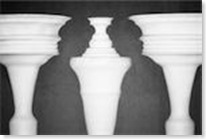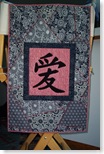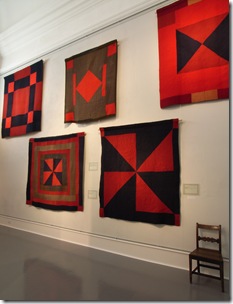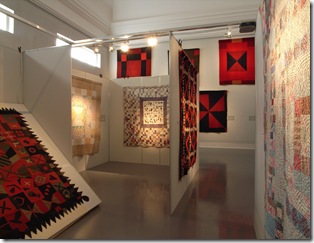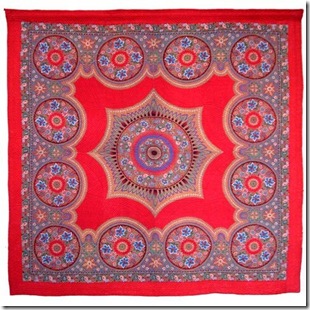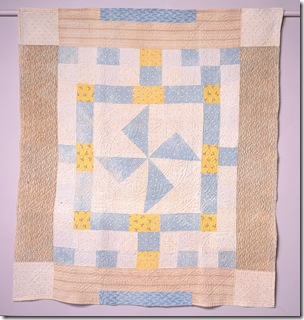I don't know about you, but I think 1930s when I think about colorful happy quilts so I went to my bookshelf for some quick relief, and pulled down Link to the '30s, making the quilts we didn't inherit written by two sisters living in Texas, Kay Connors and Karen Earlywine.
The sisters are vintage style quilt and pattern makers. They design their quilts using period newspaper quilt columns that offered mail order patterns and old quilts. Small photos of the original newspaper column pattern or quilt adorn each of the 9 quilt patterns featured in this book.
The patterns are from the columns Nancy Page Quilt Club and Household Arts by Alice Brooks, and one is a McCall's wedding ring pattern., as seen on the book's cover. Two signature quilt patterns are reproduced. One is from a 1931 quilt with embroidered names, and the other one is made into a contemporary quilt minus signatures.
The quilts chosen are familiar but I seldom see them reproduced at shows or on exhibit, which is nice. The patterns range in difficulty from beginner to experienced quilter. Most of them are mid range to advanced. The more difficult quilts contain curves, applique, and bias edges.
A variety of border treatments were made popular in the Colonial Revival period between the World Wars and are reflected in these patterns. Borders include the ice cream cone, prairie points, scallops, tiny half square triangles and the curved vine of petals (think of one Dresden plate petal).
Kay and Karen wrote a quilt stitch pattern book recently, Fancy to Frugal, authentic quilt patterns of the '30s. Here they are describing quilting from the same time period, although Link to the '30s shows suggested quilting patterns for the borders and white or plain fabric blocks in the quilt.
These two books give you access to excellent patterns and ideas to pull from to make your own combinations of borders and blocks or to reproduce your own favorites. The templates are arranged on pages without overlapping each other for easy tracing, and illustrations are easy to see and understand. Their strip or rotary piecing directions are also easy to follow.
Please post your comments by clicking here http://www.quiltersspirit.blogspot.com/ if you are receiving this as a subscriber. Scroll down to "comments" below the post, click, and a comment box will appear. If you haven't read the great comments about Remembering Adelia, take a peek, even the author wrote in! Links top other
Subscribe by Email or






